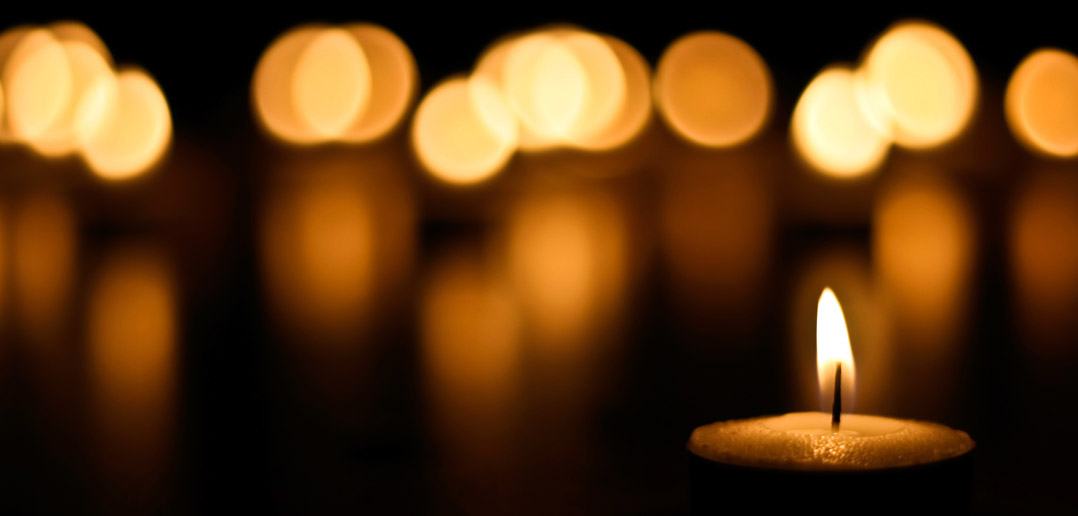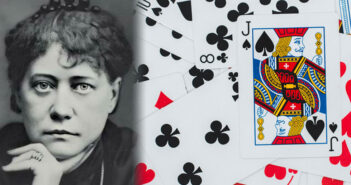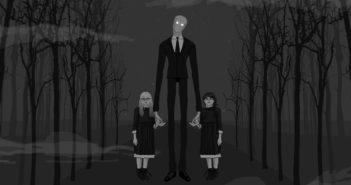A desk lamp provides Gavin Hurley with nothing when he’s at work. Only flickering candlelight is capable of supplying the light he needs while crafting his stories. Watched by Michael Myers from behind the glass of a framed Halloween poster and surrounded by the soft sound of eerie music, Mr. Hurley is at home with the right conditions he needs to realize the true nature of his craft.
Mr. Hurley believes deeply in the dark genres of storytelling. Aside from the classic voices in haunted literature like Edgar Allan Poe, Charles Baudelaire, and H.P. Lovecraft, he believes that contemporary voices like Edward Lee, Richard Laymon, and Ramsey Campbell keep the genre rich and alive. And one day, he hopes to join their ranks.
Haunted Literature
Having originally earned a B.A. in philosophy from Saint Joseph’s University in Philadelphia, the New Jersey native from Manahawkin had greater ambitions. Mr. Hurley’s passion for horror literature led him to Rowan University in Glassboro, NJ. He’s now pursuing a M.F.A. in writing there; exploring his literary tastes as much as possible within the confines of the degree he’s pursuing.
When Mr. Hurley is not working on material for school or supporting himself as a retail manager, he’s spending time in the isolation of his office, evoking his fascination with the horrific. “I find horror to be the most powerful expression of art. The message is delivered so aggressively that it inevitably sinks in,” he said. He’s been spending a great deal of time editing his first novel, Piety, in between school and work. The book shows that he’s not afraid to deal with the most stygian of elements, as it deals with religious devotion attacked by demonic influence. He’s also written two screenplays and a handful of short stories.
Mr. Hurley’s devotion is multi-faceted. He believes that the darker side of art reveals the lighter side of life more clearly. One of the key attributes that the macabre offers is freedom from taboos, as it employs the very same unthinkable concepts to make a statement. “There is openness. The gothic writer does not worry about overt sexual descriptions just as the horror writer does not worry about the grotesque—the shocks and scares make the art more memorable.”
The immediate feeling that a horror tale should summon up is to initially give “the reader a scare.” But it’s unlikely a reader is going to gouge their nails into their chair or bolt up screaming. The power of a spooky story is that it leaves a lingering sense of wonder—scared questioning—a “sustained fright” as Mr. Hurley puts it.
Simon Wood, however, does not count himself as a devout horror writer. He simply goes straight for the thrill of a tale; no matter was mode of genre he uses. Originally from Great Britain, he now lives in El Sobrante, CA—having a flattering résumé of thriller stories to his credit. The author of Dragged into Darkness, Working Stiffs, Accidents Waiting to Happen, and Paying the Piper, Mr. Wood has a large enough portfolio to understand genre. “I grew up loving genre fiction—pulp, crime, horror, and private investigator novels. That’s where I wanted to be.”
Though Dragged into Darkness is a collection of short stories that focuses on dark forces and their effects on human lives, his novels are thrillers which Mr. Wood describes as “cause and effect”—people inviting very real dangers into their lives, such as workplace crime in Working Stiffs.
Because he has sampled different variations of genres in his reading and writing, he’s not afraid to generalize the different dark genres of storytelling. He believes it centers on the rush of adrenaline that is given and not so much the route by which it’s delivered. “I’m a believer in the generalization. I want to thrill readers and I have a number of ways of doing that. If the reader is frightened, they will be thrilled.”
Aside from the factor of sheer thrill, he, like Mr. Hurley, believes that deeper exploration of frightening elements opens the mind, saying that if, “you ignite someone’s imagination, you’re going to ignite their emotions.” Because this is where Mr. Wood finds enjoyment and passion in his writing, he thinks fondly of the dark genres. “Genre is my home. Writers should not only write what they know, but what they love.”
While Mr. Wood recognizes and embraces genre, Nate Kenyon is not so quick to pay the label much mind. Living in Massachusetts, the author’s first novel, Bloodstone, is horror fiction that has received notable recognition. It’s received the Preditors and Editors Best Horror Novel of 2006 and was a Bram Stoker Award finalist. But he’s not eager to put a label on himself, as he feels that, “genre is simply a way for us to put a stamp on something, but it’s never meant much more to me than that.” His writing gravitates to the darker aspects of nature, and that’s what he feels akin to discuss. “I don’t sit down and say ‘let’s write horror.’ I’m just more interested in the dark side of life.”
Mr. Kenyon believes the raw fear factor is important, but he is open to how a reader finds it. “It’s sort of like the difference between mountain biking and visiting a graveyard at midnight. The blood’s pumping, but for different reasons,” he said.
But it’s not all about being frightened. To write chilling stories isn’t worth much if that’s all that’s accomplish. Believing the same creed of Mr. Hurley and Mr. Wood, dark tales should allow us to explore deeper levels of our own minds. “It allows readers to exorcise demons without being in any real danger,” Mr. Kenyon said.
His inspirations vary. He cites writers from Mary Shelley to Clive Barker, but Stephen King is someone that he has deep faith in. “I devoured all of his work when I was a teen,” he said, reflecting on the groundbreaking advances he beliefs King gave to the field of dark literature.
He also cites Shirley Jackson’s story, “The Lottery.” It doesn’t need monsters or gallons of blood to startle its audience—only the sharp use of narrative misdirection. Mr. Kenyon even considers the Bible a corner stone of dark literature. “There’s some scary stuff that goes down in that book,” he said.
Chilling Comic Books
The use of bleak elements in creative expression has a long reach, as John “Wes” May of Nashville, TN, proves with his independent comic book, Midnight’s End, Mr. May’s is a story that employs the heavier ambient mood of classic gothic storytelling, a literary method combining romantic, relational themes with brooding haunting elements. The particular genre was made well-known by early writers like Horace Walpole, Ann Radcliffe, and Matthew Lewis. But his story goes further, as it deals with a murder mystery around a gay couple when one is ultimately killed by a vampire. The black-and-white gothic tale has a noir flare that gives the story a multi-faceted appeal.
But Mr. May’s story doesn’t rely on fear to invoke emotion. “[The story is] not intended to cause fear at all. I think that the horror genre offers a window to loss that no other genre can,” Mr. May said as he discussed how the book was a method for him to cope with his own personal losses. Because the story uses the comic book medium, Mr. May relies on visual imagery as well as the written word. His illustrated characters and scenery have a smooth, sleek, and shadowy appeal, balancing gloom with beauty. And though Mr. May’s book is not intended to terrify, he believes strongly in a good scare. “I think it’s good to be scared. Darkness begets darkness until you see the light again.”
Mr. May’s graphic tale is in good company. From the classic days of Tales from the Crypt to the modern Hellboy, the young artistic medium of comic books has had a successful hand in the dark genres. Seth Frail has great faith in the comic book medium’s ability to tell shadowy stories. He has spent a decade of his life as a professional artist. The Ballwin, MO resident has been a freelance and commissioned artist for eight years and used the profit as a main source of income. His portfolio grew so large that he eventually held five art exhibits of his work.
His first major breakthrough in the comic book industry was the graphic adaptation of The Time Machine in the Graphic Classics: H.G. Wells, Second Edition collection. Since then, he’s worked on smaller independent titles such as Monster Babies and was the featured artist for the U.S. Air Force’s magazine, Airman, from 2005 to 2006. He is currently illustrating Brian Augustyn’s comic book, The Witness.
Mr. Frail’s passion as an artist has allowed him to consider the actual impact of dark storytelling in visual art. “Who doesn’t like a good scare every now and then? A good horror story is like a good joke: you must have a setup to draw your audience in to hit them with the punch line. Suspense is like that, or else no one cares about the payoff.” He agrees with his contemporaries that the macabre genres offer a greater insight, opening a door of exploration into the recesses of our minds that we typically shy away from.
Mr. Frail believes, however, that there is more to offer from the comic book medium for horror stories. The tantalization of pictures and words fused together can deliver greater feelings than just words or imagery alone—a “hulking shadow” effect captured at the turn of a comic book’s page, as Mr. Frail sees it. But along with Mr. May, he believes that monstrous storytelling can evoke more than just terror, but empathy and compassions as well. “I’ve always empathized with Frankenstein’s monster more than the doctor himself, for example—some of it being psychology and some being curiosity.”
Macabre Filmmaking
But comic books and prose alone don’t have the mainstream reach of film, where dark tales find their zenith of popularity. Jeffrey Lynn Ward of Florida works intimately with cinematic horror, having graduated from Columbia College. He’s since worked in the film industry and now has broken out on his own with his first independent horror movie, Hallows Point. The movie depicts a séance that calls back the spirit of a murdering teacher, of which Mr. Ward was the writer, director, and producer. The sweaty experience of shooting the film in a stifling Florida warehouse was testament to his love of horror.
“It’s the campfire-story mentality. The best part of camping is sitting around the fire telling ghost stories until everyone is petrified. With a movie, you’re allowed a much bigger fire,” Mr. Ward said. He agrees with his storytelling colleagues that the appeal of darkness is wanting to know what is lurking beyond our field of vision, what is hiding in the closet or crawling under the bed, ultimately what fuels our own fears in our minds. But the reach of film is much farther and often times more gripping than any other medium because it’s real-time; the pace is self-sustaining and guides the viewer. “There’s a lot of satisfaction in a reaction from an audience. Fear is by far the most fun to me.”
To capture the feelings of terror in Hallows Point, Ward and Erik Curtis, his director of photography, decided to shoot the movie in High Definition, allowing the camera to capture everything the naked eye is able to see. This allowed the crew to use practical lighting like standards bulbs and candles without having to worry about larger studio lights. It all added to the mood of visual eeriness in the end, which set the gloomy mood for viewers. This combined with creative camera moves and quality makeup provided by Dawn Gardner, made for what Mr. Ward saw to be a successful horror film.
Mr. Frail agrees with Mr. Ward of film’s potency. “In film you have tools at hand like sound and time that simply aren’t present in literature or illustrations,” Mr. Frail said. Because of this, writers and artists are required to use storytelling techniques to touch at deeper feelings other than pure adrenaline-rushing terror.
But all of these contemporaries have a common consensus, whether they are author or filmmaker, writer or illustrator. Whatever is waiting for us in the blackness behind our eyelids has a purpose—to make us question and find courage in what we can’t see and don’t know.
It is the indulgence of these dark storytellers and their countless associates that helps us look for that answer, to understand what scares us and why. Only through an embrace of the darker side can anyone fully appreciate the lighter side. No matter if a thriller novel, a dank gothic tale, or a blood-curdling horror film, they all provide the chilling fear of the unknown for readers to examine and understand.
“We enter a world of our mind. We can face our fears and stare them down. That’s a valuable thing,” Mr. Kenyon concluded.
This essay was originally written for Broken Frontier.




